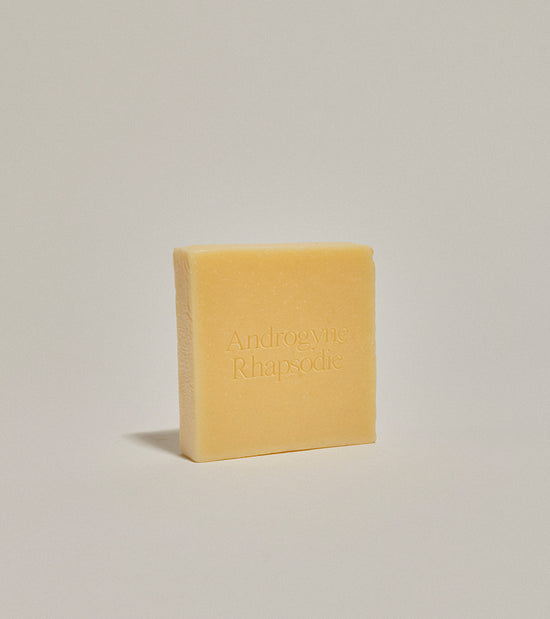Do you remember the first vintage perfumes you tried, and which ones made you curious to try more? Had perfume been a big part of your life prior to that and how did it change once you began exploring vintage fragrances?
I didn’t realize how much perfume spoke to me until I started paying attention to it consciously, and for that I have to thank all the people who were online discussing perfume around the time I began collecting and blogging in 2008. But I’d always loved perfume, if not as obsessively.
The first vintage perfumes I ordered off of eBay were Baghari by Robert Piguet, Lanvin’s My Sin, and Chanel No. 19 — I think. (It’s been 14 years!) You can actually chart my falling in love with vintage perfume on my blog, which I’ve left online. Here’s one of the earliest entries in 2008: “Baghari was the vintage perfume that first made me notice the difference between vintage and modern perfumes. Vintage perfumes have a depth, a volume, as some people say, a way of unfolding through time that even complex, modern fragrances don't have. Baghari didn't necessarily unfold from note to note over time, but its appeal was its roundness, for lack of a better word. There was something 3D and physical about Baghari that I haven't really encountered in modern fragrances.”

Are there any styles or concepts that you discovered in vintage perfume that you wanted to bring to a modern perfume wearer with ERIS? Any specific perfumes from the past that were a spring board for any of the ERIS fragrances?
I fell in love with the boldness of vintage perfume, but at the beginning, I fell hard for animalic perfumes, and the impetus for ERIS was to create a modern animalic fragrance. I was obsessed with the sensuality, depth, and emotionality of vintage animalics. I wanted to figure out how to create that effect in a modern way, without using ingredients that harmed animals (castoreum, civet, musk, for example, all either come from dead animals or, in the case of the civet, tormented ones.) So, all ERIS animalic fragrances use synthetics, with the exception of Mxxx., which uses natural ambergris and Hyraceum or Pierre d’Afrique (Africa Stone). Both are naturally expelled by in the former case, the sperm whale, and in the latter, a cute little animal called the Hyrax. No animals were involved or harmed in collecting the Ambergris and Pierre d’Afrique in Mxxx., both of which were provided by Stéphane Piquart of Behave, an organization founded on principles of transparent and sustainable sourcing, fair trade, and the empowerment of local populations.

Your fragrance Ma Bête features what has been called Antoine’s “animalic cocktail” Do you feel there is an ever-growing interest in more animalic and bodily elements people might be craving from their perfumes?
First, I think it really depends on your tastes. For some people, the idea that perfume might have a whiff of dirty hair or smell like “the underside of my mistress” (to quote an infamous saying attributed to Jacques Guerlain), is repellent and contradictory to why they wear perfume. And nothing may change that. But for others, they might warm to it right away, or it may be an acquired taste. I think it’s a case of IYKYK, as the kids say (“If you know, you know.”) If you crave it, probably because it feels comforting, sensual, naughty, grounding, or all of the above.
Do you feel that there were more discernible trends and styles in perfumes from past decades, and what mirrors, if any, did those perfumes hold to their epoch? In your opinion, is there sociological relevance to fragrance?
When I began “sniffing my way through the 20th century” (my new go-to way of explaining the book!), the styles and trends of each decade’s perfumes revealed themselves, and prompted me to interpret how they reflected the times in which they were created. It was this sociological / cultural layer that inspired the book. I was interested in the aesthetics of vintage perfume, of course, but what deepened my interest was discovering that perfume, as a 1950s Primitif perfume ad claimed, could “say the things you would not dare to.”

Perfume was subversive because it held within it messages and cultural tensions that perhaps could not be spoken out loud but could be folded into a medium most people didn’t take seriously. The book’s thesis is that perfume styles — and advertising — reflect the times, and often say things about gender, sexuality, power, even race and class that people either “would not dare to” or didn’t consciously understand.

How has your working relationship with Antoine Lie changed since you began working with him as your perfumer at ERIS? Were there any fragrances composed by him you were a fan of prior to ERIS?
As with any collaboration, the longer you work with someone, the better you get at communicating with them. Since I had no training in perfumery and had never worked in the industry, I had to create my own way of communicating with him (through perfume names, descriptions, other scents, mood boards, asking for certain emotional effects, etc.)
Antoine got onto my radar (as he does with many people, still today!), with the wild Etat Libre d’Orange perfume Secretions Magnifique (Magnificent Secretions). This perfume repelled me compelled me, fascinated me, and I had to talk to the perfumer who created a perfume that (to me) was not beautiful in a conventional way but that still mesmerized me. That’s why he’s in the “Scent Visionaries” chapter of my book. But I’m a fan of so many of his fragrances, not only for ELDO, but also the fabulous Blood Concept MA, Tom Ford’s Café Rose, etc.


